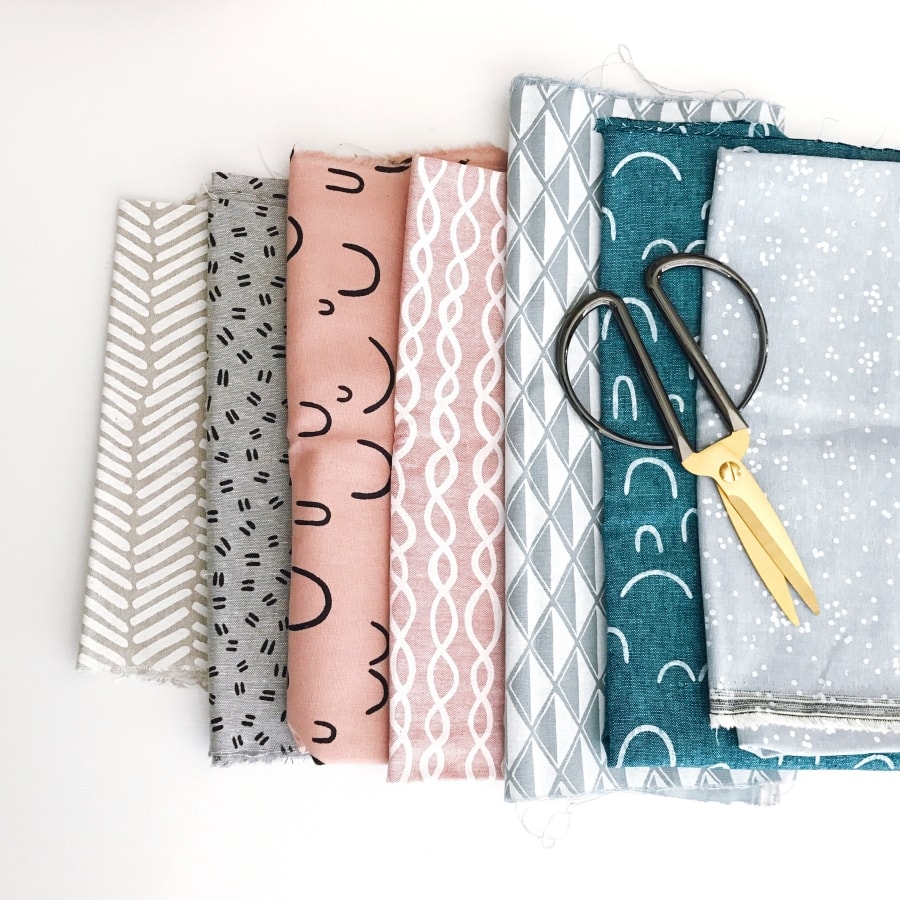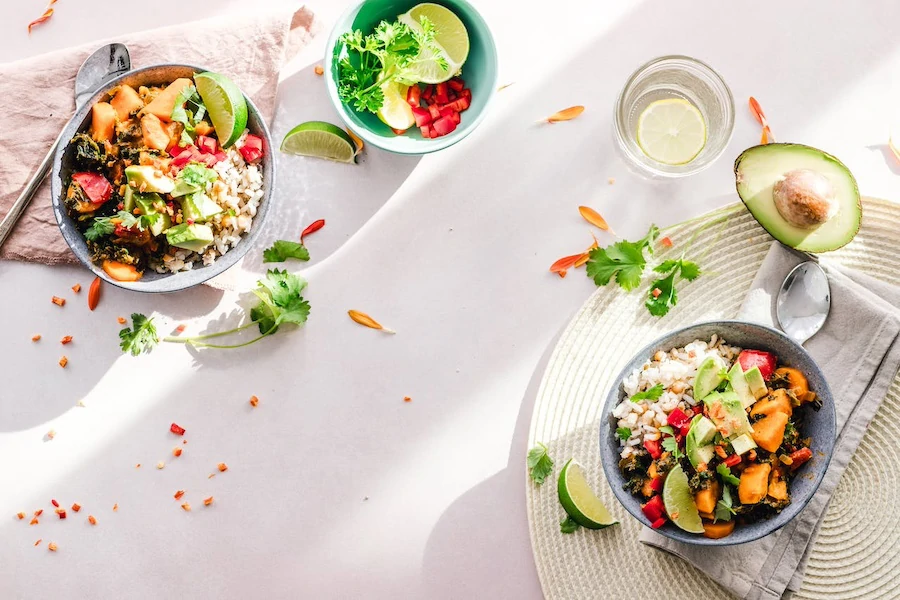
There are a lot of great fabrics out there that are eco-friendly and help create a more sustainable environment. Knowing which fabrics provide our planet with a better chance of becoming a greener place helps us make better decisions as global citizens.
For me and my family, it’s important to reduce, reuse, and recycle everything we consume, so touching on the topic of which fabrics we fill our household with is a big move in the right direction.
It’s great that today we have a vast amount of information that helps us become better consumers, especially if our goal is to create a more sustainable, eco-friendly world. That’s why I put together this guide to help navigate the waters of the best eco-friendly fabrics out there.
8 Eco-Friendly Fabrics
Bamboo
There are so many reasons why bamboo is one of the most eco-friendly fabrics on the plant. It is highly renewable, is antibacterial, is biodegradable, it produces 35% more oxygen compared to similar fabrics, it doesn’t require fertilizers or pesticides, and it helps rebuild eroded soil.
Needless to say, the more bamboo fabrics that we purchase as opposed to other fabrics, the better chance we have at creating a greener future. Personally, my family and I are huge fans of purchasing clothes made out of bamboo fabric and that seems to be a growing trend in our community.
In recent years, bamboo has been called the “green gold” of modern times. This super-powered plant is actually a grass and acts similar to a weed in terms of how quickly it can grow and where it can live. The fact that it’s able to regrow easily without having to replant it numerous times is an amazing quality.
Since bamboo can grow in many countries very easily, it’s become more and more common for this plant to be grown across the globe. From Southeast Asia to the Southeast United States to Northern Australia to Sub-Saharan Africa, bamboo has become prolific and hopefully this trend continues.
Hemp
I love hemp-based fabrics because it’s very similar to bamboo in the eco-friendly sense. It’s antibacterial, biodegradable, and a very renewable resource. It’s also one of the few plants in the world that require very little water to stay alive and it even grows plentiful in many environments.
Compared to other similar plants, hemp also has a more efficient way of production in the sense that it can produce two to three times more fiber per acre than cotton. Wow! That’s a super-powered plant!
Hemp is one of the top eco-friendly fabrics out there, but it also has its downsides. For one, it actually requires fertilizers and pesticides to grow, which is the opposite of other similar plants such as bamboo. However, this is only the case when growing hemp on a large scale.
Sadly, hemp has a negative stigma due to it being the plant that produces a common drug that not everyone is a fan of. That’s less of an issue, in my opinion, but it’s still something to consider if you’re not a fan of those kinds of plants.
Organic Cotton
Now not a lot of people would consider cotton as being the most eco-friendly fabric, but when it comes to fair-trade, organic cotton, that’s not entirely the case. Organic cotton is a great way to move toward a more green future for our planet if we’re going to continue to use cotton in general.
The best part about organic cotton is that it requires far fewer pesticides and herbicides than non-organic cotton. Also, it’s a naturally biodegradable plant, so that’s a huge plus in our current age.
Sadly, cotton still has a major negative stigma because it’s one of the most environmentally demanding crops on the planet. For the longest time and until now, the entire cotton industry demands 10% of the world’s pesticides and 25% of the world’s insecticides. That’s huge!
What that means is a lot of chemicals get polluted into our soil and waterways, producing a large number of cancer cases where it’s grown. Now that’s for non-organic cotton, but even organic cotton requires a large amount of water to be produced compared to other fabrics. In a world where water has become more of a limited resource, this isn’t the best situation and demands a premium on planet earth.
Linen
Who would’ve thought that linen would be such an eco-friendly fabric, but it is! Not only does it require far less water than cotton, but it’s antimicrobial, moth-resistant, and biodegradable. On top of that, it doesn’t need any fertilizers or pesticides for it be grown, even at large scales. These are just some of the reasons I’m a huge fan of using linen throughout my household, especially in my bed and bathroom.
A great part of linen is that it’s very durable and can last decades if taken care of properly. The reason it lasts so long is due it being made from unique cellulose fibers that are commonly derived from flax plants. Flax plants don’t require a log of care, so they grow pretty much on their own in many environments.
You may already know about flax plants from the famous flax seeds that are used commonly in modern, healthy food products. Flax, and thus linen, is an incredibly eco-friendly fabric and should be used liberally around the household.
Soy Silk and Cashmere
Soy is one of the most versatile plants on the planet, similar to hemp and bamboo. It can be used to produce food, household products, and clothes, so it’s definitely a plant to take seriously in the eco-friendly environment.
As a matter of fact, it can be used as a material to produce high-quality silk and cashmere, which, without soy, can be damaging fabrics in terms of production. We all know how soft, smooth, and beautiful silk and cashmere can be, so going the soy route is an excellent option when purchasing these materials.
Arguably the best quality of using soy silk and cashmere is that it avoids the painful process of extracting animal furs to produce it. This means that it’s an inherently cruelty-free alternative to plain silk and cashmere, which is a powerful result for our animal friends.
I’m sure our animal friends appreciate people becoming more soy-minded as opposed to sticking with potentially harmful fabrics that increase the negative effects on our planet and the animals we share it with.
Recycled Polyester
Polyester is one of the most wasteful, harmful fabrics we use on planet earth. The problem with polyester is that it’s completely synthetic and is made out of petroleum, just like anything that’s made out of plastic. As a matter of fact, polyester is a kind of plastic fabric, which speaks volumes for how wasteful it really is.
One of the most important actions we can take as global citizens is to reduce our use of plastic so as to prolong the sustainability of our planet. But how can polyester be an eco-friendly fabric?
Now, recycled polyester is a different story. As we’ve learned, polyester is simply just a plastic-based fiber, so it makes sense that we should be able to produce polyester with recycled materials. Well, that is the case nowadays, which is a fantastic reason to use recycled polyester.
Actively reusing our worlds existing plastic in a responsible way so as to make sure it doesn’t end up in a landfill can have an enormous benefit on our planet. In the end, recycled polyester is a great eco-friendly fabric that reuses plastic bottles and reduces the use of petroleum and the continuous production of original polyester.
Cruelty-Free Wool
Now, wool is a bit controversial due to it being removed from sheep and the potential of animal cruelty on behalf of the farmer extracting and producing the wool. However, that doesn’t remove the eco-friendliness of wool itself and shouldn’t be removed from the candidates as an eco-friendly fabric in our day and age.
The main point to make with wool is that it truly is a renewable resource and promotes good health for sheep since they need to be sheared anyway. That’s why my family and I still wear wool.
The main aspect to consider when purchasing wool clothes and other products is to ensure the source of the wool is produced in cruelty-free, non-chemical methods. It’s important that if we do use wool in our everyday lives, we want to make sure that it’s made in a way that adds as little of a carbon footprint as possible.
The best way to ensure all of this is to purchase wool from trusted manufacturers that clearly state that they only use cruelty-free, sustainable methods for producing their wool. Often, this isn’t the easiest task to do, so it’s important to be vigilant in researching the wool clothing brands you purchase from.
Recycled Leather
Another fairly controversial fabric that is, in fact, eco-friendly is leather, but only when it’s recycled. It doesn’t take much convincing to know that leather is not eco-friendly because it helps promote the continued action of breeding more and more cattle.
The issue here is that the food industry produces a lot of waste, much of which comes from raising and taking care of cattle. As a matter of fact, around 14% of the world’s deforestation is directly linked to cattle farming across the globe. That is not a good metric to have for any industry.
However, similar to polyester, the wasteful and irresponsible act of producing leather can still be turned on its head by producing products made out of recycled leather. Just like plastic, we just so happen to have an abundance of leather in the clothing industry, so instead of being even more wasteful by simply throwing it away, we can turn it into a positive with eco-friendly, recycled clothes.
I like to think that there’s a silver lining to everything, and, in my opinion, I’d rather reuse and recycle wasteful materials instead of tossing them into our ever-growing landfills.
Fabrics to Avoid Entirely
Acrylic
One of the most harmful fabrics produced to this day is easily acrylic due to it being 100% synthetic. What this means is that the only way to produce it is with harmful chemicals that are absolutely not biodegradable. Acrylic cannot be recycled, which means it’s literally a complete waste once it’s discarded.
The main reason acrylic is so popular is that it’s a common alternative to wool. Also, it’s soft, lightweight, cheap, and in high demand. My suggestion is to avoid it at all costs. If any of the clothes you buy contains even a small amount of acrylic, those clothes are automatically tainted.
Polyester
I touched on this earlier in the post, but, to reiterate, polyester is another artificial fabric that’s become incredibly common in the clothing industry. The reason being is that it’s cheap to make because it’s made out of petroleum, which plastic is also made out of.
With all the plastic in the world already, there really isn’t room for more plastic. Sadly, polyester is one of the most common fabrics out there, just like plastic bottles are almost everywhere we go.
Similar to plastic, it can take up to 1000 years for it to biodegrade. Even though it is recyclable, this is definitely a bit too long for objects to be sitting around for. Even when it is recycled, it sadly takes a large amount of chemical processing to break down into recyclable materials.
Non-Cruelty-Free Animal-Based Fabrics
I mentioned before that wool and recycled leather are either 100% eco-friendly or, at the very least, an improvement on a bad situation. However, anything that’s not renewable or cruelty-free in terms of producing popular fabrics should be avoided at all costs. Sadly, this can include fabrics such as wool, leather, silk, and cashmere.
If you know for certain the clothes that contain these fabrics came from a cruelty-free environment, and, in the case of leather, they’ve been recycled, then by all means you should feel safe purchasing them. However, this can be a difficult task as most manufacturers aren’t going to be very open about this, and you can bet these qualities are present in the clothes that don’t mention them at all.
Non-Organic Cotton
Cotton is a very heavy water and energy-consuming fabric and it gets even worse when it’s not organic. Non-organic cotton requires a large dose of harmful chemicals to process it properly, which means continuing the painful process of pollution on our planet.
Like I mentioned before, I believe there’s a silver lining to everything, thus my suggestion to use organic cotton if you want to still use cotton. But non-organic cotton should be avoided due to the numerous harmful side effects on the health of our planet.
To Wrap Up
We’ve looked at the most eco-friendly fabrics the planet (and human beings) have to offer. I’m still a huge fan of bamboo, hemp, and linen fabrics because they truly are earth’s gift to people when it comes to renewable, environmentally friendly fabrics.
But we shouldn’t stop there! Other fabrics that are organic or recycled can help turn a negative into a positive, or at least reduces the negativity. All in all, I believe it’s best to be informed about these topics because it truly does affect our lives and the lives of others (including our animal friends) on this planet.
Remember, be aware of what you’re buying and try to aim toward eco-friendly, renewable fabrics whenever possible. You’ll not only look great, but you’ll feel even better!




